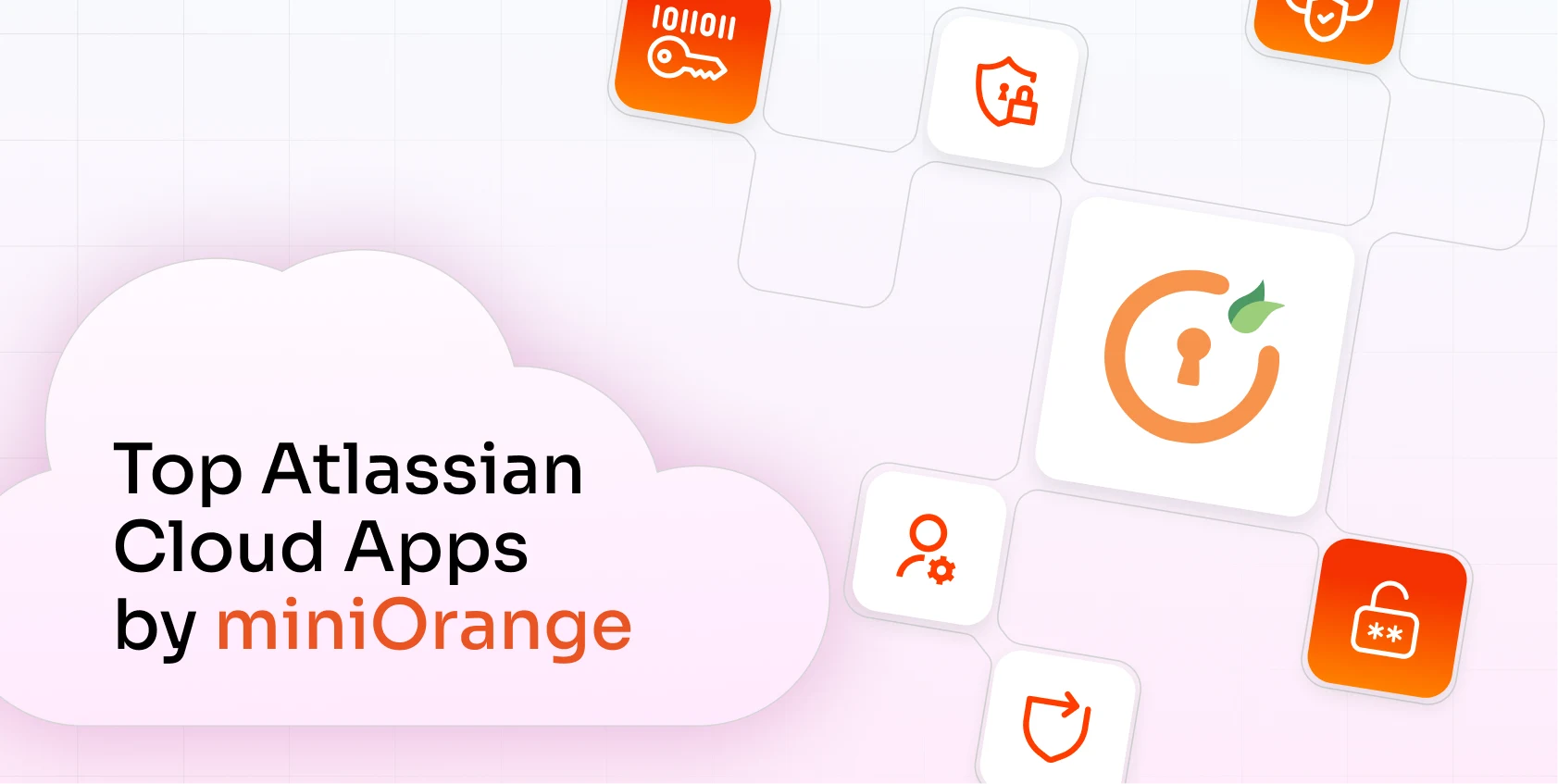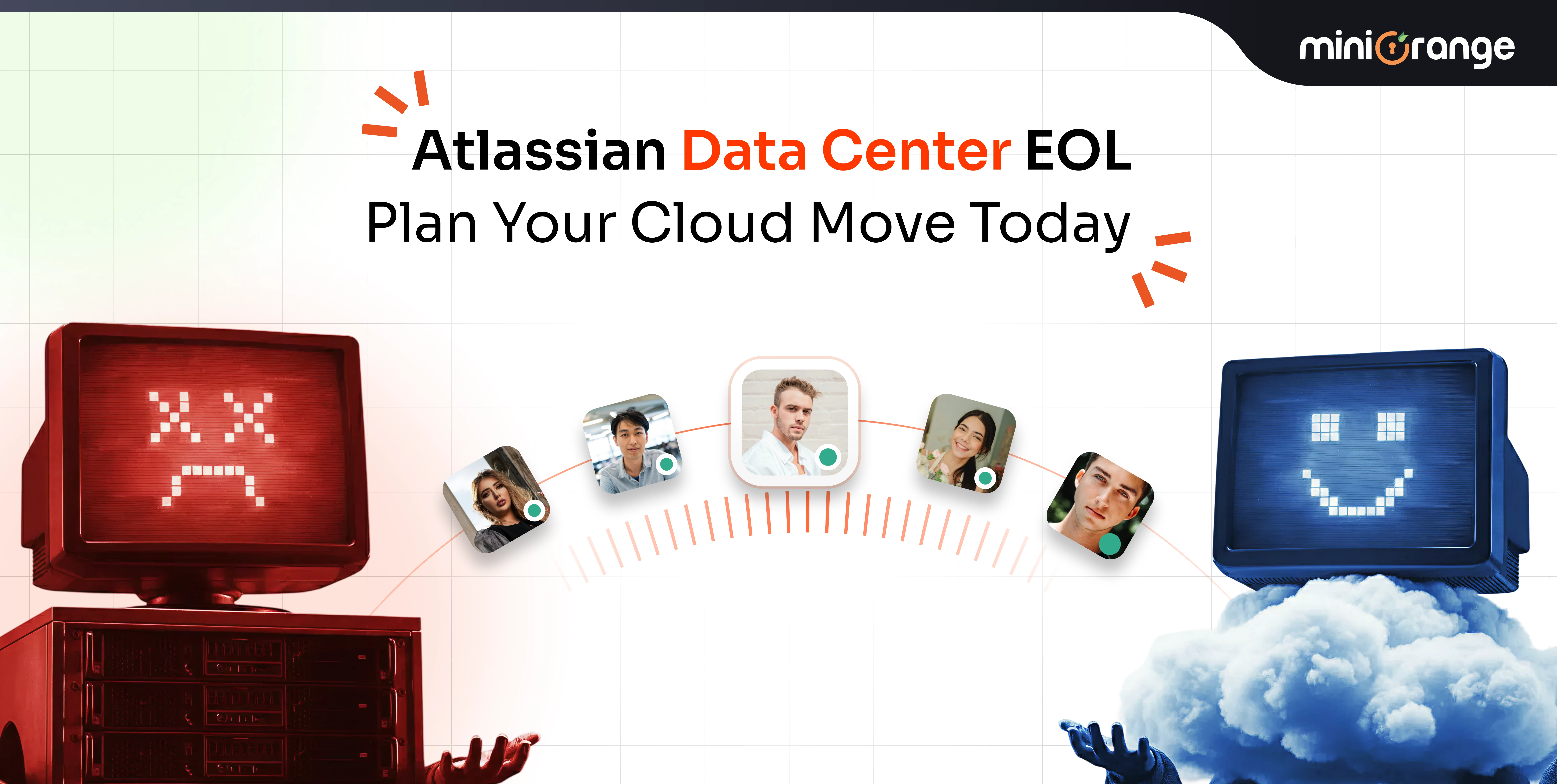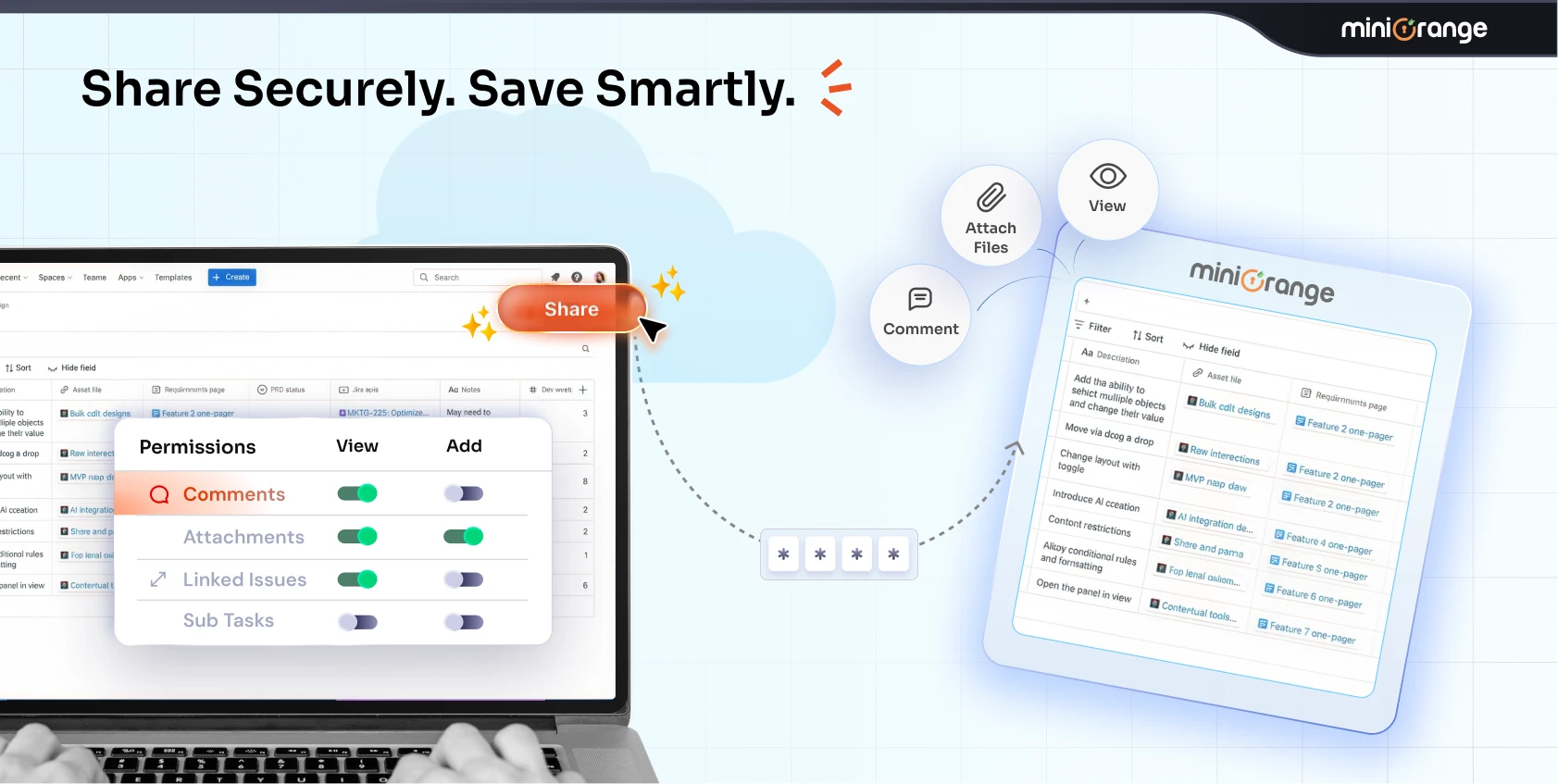Whether it’s syncing issue data with development tools, automating content updates in Confluence, or connecting project management to reporting systems, REST APIs form the backbone of these interactions.
As teams rely increasingly on these automated processes, securing API access through reliable authentication becomes essential to protect sensitive information and maintain system integrity.
This is where the miniOrange REST API Authentication app plays a vital role. Whether it involves authenticating requests to Jira’s REST API or ensuring secure access to Confluence’s resources, implementing strong API authentication strategies is key to safeguarding your Atlassian environment.
In this blog, we will explore the top five challenges organizations face with API authentication for Jira and Confluence. We will also discuss how modern solutions can effectively address these issues to keep your integrations secure and compliant.
Why Secure REST API Authentication Matters
APIs are essential for modern software ecosystems, enabling powerful integrations and automation across platforms. However, their very openness can also make them a prime target for security threats if not protected properly.
Typically, many organizations relied on basic authentication, which sends a username and password with each API request, to control access. While straightforward, this approach has significant security shortcomings that have led Atlassian and the broader industry to phase it out.
Key security risks associated with basic authentication include:
- Credential Exposure: Basic authentication sends credentials with every API call, often encoded in base64 but not encrypted. If communication channels are compromised, attackers can intercept these credentials easily.
- No Granular Permission Controls: Basic authentication typically grants broad access tied to the user account, lacking fine-grained scopes or permissions. This can result in over-permissioned API access, where integrations have more privileges than necessary, increasing the attack surface.
- Credential Management Challenges: Storing passwords in scripts, configuration files, or CI/CD pipelines poses a major risk. These secrets can be accidentally exposed through version control, logs, or insider threats.
In response to these vulnerabilities, Atlassian has shifted toward modern, token-based authentication protocols such as OAuth 2.0 and Personal Access tokens. These methods provide:
- Improved Security: Tokens do not expose user credentials and can be rotated or revoked independently.
- Better User Experience: OAuth supports delegated authorization, allowing users to grant limited access without sharing passwords.
Beyond security concerns, regulatory compliance adds another critical dimension. Frameworks such as ISO 27001, SOC 2, and GDPR require organizations to implement strict access controls, detailed audit logging, and traceability for all system interactions including API calls. Failure to meet these standards can result in legal penalties, data breaches, and reputational damage.
For organizations using Atlassian products, this means secure API access for Jira and secure API access for Confluence is no longer optional. Robust authentication mechanisms combined with comprehensive monitoring ensure that API activity can be audited and that only authorized entities access sensitive data and operations.
Challenge 1 – Basic Authentication Deprecation
Problem Statement: Atlassian is retiring basic authentication for Jira and Confluence REST APIs, ending support for username-password pairs in integrations. Many legacy workflows and tools still depend on this outdated method.
Risk Impact: Without updating, integrations will fail when basic auth is disabled, causing service disruptions. Continuing to use basic auth exposes your environment to credential leaks and attacks.
Best Practice: Migrate to modern authentication methods such as OAuth 2.0, API tokens, or personal access tokens. These methods provide encrypted credential exchange, granular permissions, and token lifecycle management. Transitioning early helps ensure uninterrupted integration and compliance with evolving security standards.
Challenge 2 – Third-Party App Integration Security
Problem Statement: Jira and Confluence integrations with third-party tools like CI/CD systems or chatbots often use static credentials or broadly scoped tokens, increasing exposure.
Risk Impact: Poorly secured integrations risk unauthorized access, data leaks, and can serve as entry points for attackers into your Atlassian environment.
Best Practice: Use OAuth 2.0 or bearer tokens with tightly scoped permissions based on the principle of least privilege. Employ token expiration and rotation policies to reduce risk if credentials are compromised.
Challenge 3 – Role-Based API Access
Problem Statement: Over-permissioned API keys or service accounts are frequently used for simplicity but increase the risk of misuse and extensive damage if compromised.
Risk Impact: Excessive privileges can allow unintended data changes or leaks, and shared credentials amplify the potential impact of breaches.
Best Practice: Implement role-based access controls with granular scopes tailored to each integration’s needs. Limiting API permissions to necessary endpoints or actions supports zero trust security principles and reduces the blast radius of potential breaches.
Challenge 4 – Automation and Scheduled Jobs
Problem Statement: Automation scripts and scheduled jobs often store credentials insecurely, such as in code or configuration files, risking accidental exposure.
Risk Impact: Exposed credentials can be exploited for unauthorized API calls, which may appear as legitimate system activity and complicate detection.
Best Practice: Use OAuth 2.0 Client Credentials Grant flow for secure machine-to-machine authentication. Secure token management, regular rotation, and integration with credential vaults further protect automated workflows.
Challenge 5 – Compliance and Audit Requirements
Problem Statement: Regulations like SOC 2, ISO 27001, HIPAA, and GDPR require detailed, traceable audit trails for all API access and actions.
Risk Impact: Lack of comprehensive logging and traceability risks non-compliance, regulatory penalties, and incomplete incident investigations.
Best Practice: Assign unique API tokens or personal access tokens per user or integration. Log all API activity in a detailed, searchable, and exportable format. Combine these logs with authentication mechanisms to ensure audit readiness and facilitate real-time monitoring or forensic analysis.
How miniOrange REST API Authentication App Solves These Challenges
Seamless Transition from Basic Authentication
To address the deprecation of basic authentication, the miniOrange REST API Authentication app fully supports OAuth 2.0 for Data Center deployments. Additionally, the app allows administrators to disable basic authentication on older versions, effectively closing potential security gaps and enforcing modern authentication standards.
Enhanced Security for Third-Party Integrations
The app enforces scoped API access, allowing admins to restrict permissions—such as enforcing read-only access—to minimize risk exposure. It also supports encrypted tokens with customizable expiry times, which ensures that bearer tokens used for third-party app integrations remain secure and short-lived, reducing the risk of token misuse.
Granular Role-Based API Access Control
miniOrange enables fine-grained enforcement of API endpoint protection by restricting access based on user groups. This prevents over-permissioned API keys or service accounts from making unauthorized changes.
Secure Automation and Scheduled Job Authentication
To protect automation workflows, the miniOrange app supports OAuth 2.0’s Client Credentials Grant flow, enabling secure machine-to-machine authentication without the need to embed passwords in scripts. It also provides secure token management features tailored for scheduled jobs in Jira and Confluence, ensuring tokens are safely generated and easy to use.
Comprehensive Compliance and Audit Logging
miniOrange delivers detailed logging of all REST API access activities across Jira, Confluence, and Bitbucket. These logs capture critical information such as requesting users, accessed endpoints, and timestamps. The app also offers options to export logs for audit reporting, helping organizations meet stringent regulatory requirements such as HIPAA, GDPR, SOC 2, and ISO 27001.
Getting Started
Setting up secure API authentication for Jira and Confluence is straightforward with the miniOrange REST API Authentication app. Here is a simple process to get you started:
- Install the app from the Atlassian Marketplace to begin securing your API endpoints.
- Select your preferred authentication methods, such as OAuth 2.0, API tokens, or JWT, depending on your organization’s requirements.
- Configure group-based and IP-based restrictions to maintain granular control over API access.
By following these steps, you can quickly enhance the security of your Jira and Confluence APIs without disrupting existing workflows.
To make the transition seamless, miniOrange offers a free trial along with the option to book a guided setup with our experts. This ensures your configuration aligns perfectly with your security policies and business needs.
Start your free trial or book a live demo today and take the first step towards stronger API security.
Conclusion
As Atlassian continues to strengthen authentication standards, upgrading your API security has become a priority. The deprecation of basic authentication, increasing automation needs, enforcement of role-based access controls, and strict compliance requirements all highlight that secure REST API authentication is more than just a best practice, it is essential for protecting your organization’s data and maintaining operational continuity.
By adopting robust authentication methods, you not only reduce security risks but also enable seamless, scalable integrations and automation across Jira and Confluence. The miniOrange REST API Authentication app offers a reliable, feature-rich solution to help you safeguard your API endpoints from day one.
Take the next step to protect your Atlassian environment by exploring how miniOrange can simplify and strengthen your REST API authentication strategy.
Frequently Asked Questions
Q: What is the best way to authenticate Jira REST API for automation?
OAuth 2.0 with Client Credential Grant is recommended for secure machine-to-machine authentication without storing passwords.
Q: How do I replace basic authentication in Jira REST API?
Migrate to API tokens or OAuth 2.0 and disable legacy basic auth using miniOrange’s app features.
Q: Can miniOrange support both Cloud and Data Center environments?
miniOrange offers API tokens, OAuth 2.0 tokens, JWT, and group-based restrictions in Data Center, while supporting Client Credentials in Cloud.





Leave a Comment